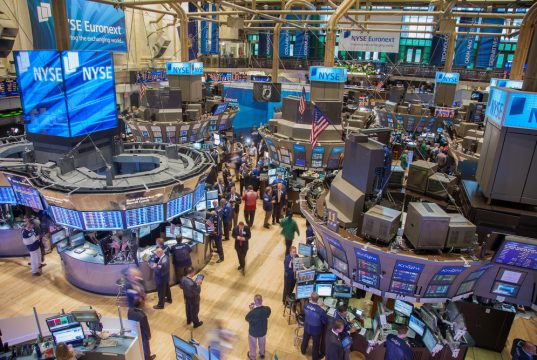The Exit Strategy: Stocks Showing Critical Warning Signs
April 26, 2025
Every successful investor knows a painful truth: knowing when to sell is often more critical than knowing what to buy.
While financial media overwhelmingly focuses on buying opportunities, our research consistently identifies companies facing significant headwinds that merit serious consideration for selling. These aren’t just stocks underperforming the market; they’re businesses confronting structural challenges, deteriorating fundamentals, or carrying valuations disconnected from financial reality.
What you won’t find here: reactionary calls based on short-term price movements or headline volatility. Each company on this list has been thoroughly analyzed across multiple metrics that historically precede substantial declines.
Smart investors understand that portfolio management requires both addition and subtraction. Sometimes the best investment decision is to redeploy capital away from troubling positions before problems fully materialize in the share price.
This week’s watchlist highlights stocks showing critical weaknesses that demand immediate attention:
Landstar System (LSTR)
Landstar System faces a potentially serious governance issue that could signal deeper problems ahead. The logistics company announced a troubling delay in its first-quarter earnings release, pushing it from April 29 to May 13 due to what it described as “a supply chain fraud that does not involve its core North American truckload services.” While management attempted to quantify the damage at approximately $15 million to net income ($0.43 per share), the need for a formal notification of late filing with the SEC suggests the situation may be more complex than initially presented.
The mere mention of fraud should raise serious red flags for investors, particularly since the company has provided limited details about its nature, scope, or how it went undetected until now. The stock’s 3.44% decline on the announcement day—while the broader market gained—indicates investors are rightfully concerned about potential governance and internal control weaknesses. With shares trading at $135.11, down from a 52-week high of $194.54 but still commanding a $5 billion market capitalization, Landstar appears vulnerable to further declines as more details emerge.
Elevated trading volume (658,922 vs. 367,004 average) suggests institutional investors are already repositioning ahead of potential additional revelations. The company’s thin 12.96% gross margin provides limited cushion to absorb financial impacts beyond the initially estimated $15 million, while the modest 1.04% dividend yield offers minimal compensation for heightened risk. Although Landstar preemptively reported revenue of $1.15 billion and non-adjusted EPS of $0.95 (near the top end of guidance), historical patterns suggest accounting irregularities often lead to subsequent revisions, making the stock particularly vulnerable until full transparency is achieved.
Old Dominion Freight Line (ODFL)
Old Dominion Freight Line faces mounting evidence of industry-wide deterioration in the less-than-truckload (LTL) sector, with shares plunging 7.70% amid broader concerns about weakening demand and pricing dynamics. The company’s first-quarter results revealed a concerning 5.8% revenue decline to $1.37 billion accompanied by an 11% drop in earnings per share to $1.19. Management specifically cited “ongoing softness in the domestic economy,” while the 6.3% decrease in tonnage per day provided concrete evidence of weakening fundamental demand.
What makes ODFL’s situation particularly problematic is the competitive response from rival carriers like Saia, which appears to be prioritizing market share over profitability—a classic sign of deteriorating industry conditions. Saia’s disappointing results, featuring sharply lower profits despite modest revenue growth, triggered sympathy selling in ODFL shares as investors recognized the implications of intensifying price competition during a period of weakening demand. This combination creates a potential double-whammy for margins in coming quarters, especially as Trump’s “Liberation Day” tariffs only took effect in April, after the first quarter had already ended.
Technical indicators reinforce this negative outlook, with the stock already trading at $146.67, down significantly from its 52-week high of $233.26 and approaching its low of $144.90. Perhaps most concerning is the surge in trading volume to 4,094,902 shares versus the 2,013,779 average, suggesting institutional investors are accelerating their exit ahead of potentially worsening industry conditions. While the company’s 32.76% gross margin provides some operational buffer, this advantage could quickly erode if price competition intensifies. With freight volumes likely to remain pressured by trade uncertainty and the potential for further margin compression as carriers compete for declining shipments, ODFL appears vulnerable to additional downside despite its already notable correction.
Opendoor Technologies (OPEN)
Opendoor Technologies exemplifies the dangers of a deteriorating housing market for companies with already fragile financial positions. The online housing brokerage saw its shares plummet 23% last week following reports that existing-home sales dropped 5.9% in March compared to February, representing the slowest pace since 2009. This data is particularly alarming for Opendoor, as the company not only connects buyers and sellers but also purchases, renovates, and sells homes directly—leaving it directly exposed to inventory risk in a rapidly cooling market.
The fundamental challenges facing Opendoor are severe and appear to be accelerating. Revenue already fell 26% in 2024 to $5.2 billion, while net losses widened to $392 million—and these results came before the latest housing market deterioration. With mortgage rates hovering around 6.8% despite some fluctuations, home affordability remains stretched as median prices have spiked 27% over the past five years to $416,900. Perhaps most concerning is the psychological shift occurring, with consumer confidence in the economic outlook hitting a 12-year low amid tariff-induced uncertainty.
Trading at just $0.76, down dramatically from its 52-week high of $3.09 and approaching its low of $0.72, Opendoor’s market capitalization has collapsed to just $553 million despite generating billions in revenue. The extraordinary trading volume of 127.6 million shares versus the 47.3 million average suggests investors are rushing to exit positions. With razor-thin 8.40% gross margins providing minimal buffer against housing price declines, no dividend support, and evidence that consumers are increasingly hesitant to make major purchases amid economic uncertainty, Opendoor appears exceptionally vulnerable to further deterioration. For investors still holding positions, the combination of worsening housing market fundamentals and the company’s precarious financial position presents a compelling case for immediate reconsideration.
Bottom Line
This week’s featured companies highlight how economic uncertainty is manifesting across diverse sectors – from supply chain fraud at Landstar raising governance concerns, to intensifying competitive pressures in Old Dominion’s freight business, to Opendoor’s direct exposure to a rapidly cooling housing market. In each case, the initial market reaction appears incomplete given the potential magnitude of these challenges. As economic headwinds intensify and corporate vulnerabilities become more apparent, these stocks face significant risk of additional downside that prudent investors should carefully consider before the full impact materializes in future quarters.













